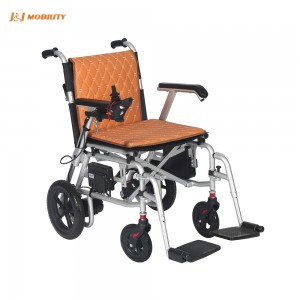Debunking 10 Myths About Electric Wheelchairs
Electric wheelchairs have transformed the lives of many individuals with mobility limitations, granting them newfound independence and freedom. However, several myths still persist, potentially hindering personal growth and limiting opportunities. Let’s debunk ten common myths about electric wheelchairs and reveal the realities that encourage individuals to embrace these devices.
Myth 1: Electric wheelchairs are only for older people
Fact: Electric wheelchairs are suitable for individuals of all ages, from children to seniors. They assist anyone with mobility impairments, regardless of their age.
Myth 2: Electric wheelchairs are bulky and difficult to maneuver
Fact: Today’s electric wheelchairs are designed to be compact, lightweight, and highly maneuverable. With features like tight turning radii, adjustable speed settings, and precise controls, users can easily navigate various environments.
Myth 3: Electric wheelchairs are less reliable than manual wheelchairs
Fact: Electric wheelchairs are rigorously tested and built to meet strict safety standards. Recent advancements in battery technology have significantly enhanced their reliability and durability.
Myth 4: Electric wheelchairs limit independence
Fact: On the contrary, electric wheelchairs promote independence by enabling users to move freely without needing assistance. They empower individuals to engage in activities, explore new places, and maintain an active lifestyle.
Myth 5: Electric wheelchairs are only for indoor use
Fact: Electric wheelchairs are designed for both indoor and outdoor environments. With sturdy frames and all-terrain capabilities, they can navigate surfaces like grass, gravel, and uneven terrain with ease.
Myth 6: Electric wheelchairs are expensive and unaffordable
Fact: While the initial investment can be significant, various pricing options are available, including rental programs, insurance coverage, and financial assistance. The long-term benefits often outweigh the costs, enhancing the user’s quality of life.
Myth 7: Electric wheelchairs are difficult to transport
Fact: Many electric wheelchairs are designed to be easily disassembled or folded, making transportation convenient. Vehicle modifications, such as wheelchair lifts or ramps, also facilitate easy transport.
Myth 8: Electric wheelchairs are a sign of weakness
Fact: Using an electric wheelchair is a personal choice and should not be viewed as a weakness. They are tools that promote independence, allowing individuals to engage fully in society and pursue their aspirations.
Myth 9: Electric wheelchairs hinder social interactions
Fact: Electric wheelchairs facilitate social interactions by providing mobility and accessibility. They enable users to participate in social events, visit friends and family, and enjoy recreational activities.
Myth 10: Electric wheelchairs restrict career opportunities
Fact: Electric wheelchairs do not pose barriers to career growth. With appropriate accommodations and accessible workplaces, individuals can thrive in various professional fields, showcasing their skills and talents.
Conclusion
Dispelling these myths surrounding electric wheelchairs is crucial for fostering an inclusive society. By recognizing the independence, mobility, and opportunities these devices offer, we can empower individuals to realize their aspirations and lead fulfilling lives, regardless of their mobility challenges. Let’s challenge these misconceptions and celebrate the potential of all individuals using electric wheelchairs.
Post time: Oct-15-2024


